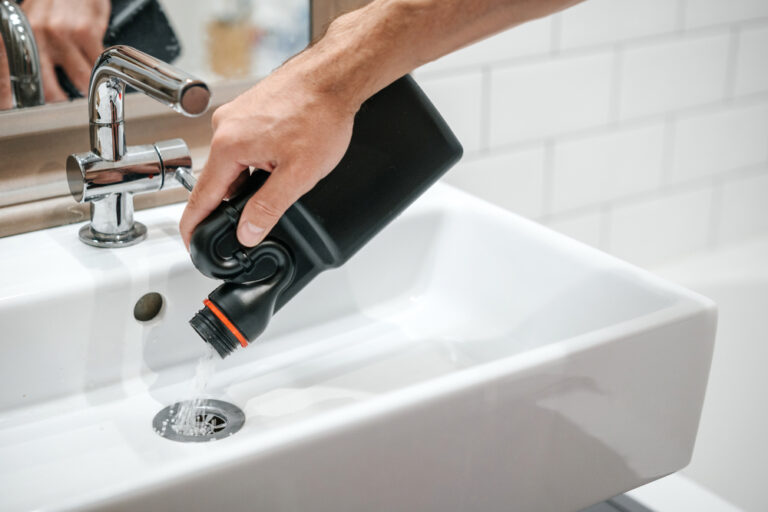As a homeowner, you probably love to find ways to cut costs when it comes to running and maintaining your home.
However, when it comes to your plumbing, cutting corners can lead to serious problems.
What seems like a simple DIY hack can become costly when a professional plumber is required to remedy the situation.
Services like drain cleaning in Edmonton are essential for keeping your plumbing in top condition and preventing expensive repairs.
To make sure your home’s plumbing continues to work in tip-top shape, here are five common plumbing misconceptions you should immediately unlearn and ignore:
1. You Can Mix Boiling Water with Grease Before Pouring Down the Drain
No matter how many ways people try to justify pouring grease down the drain instead of pouring it into a can, it absolutely should not be done.
Grease can cause significant problems and may even lead to the breakdown of your entire drainage system.
Even though mixing grease with boiling water causes it to become liquified, it will quickly cool and congeal as it travels through your pipes.
These fats and oils will stick to the inner walls of your sewer pipes over time, creating blockages that build up and harden until they completely plug the pipes.
Because these blockages are hard and solid, they can be difficult and costly to clean.
Properly disposing of grease is as easy as pouring it into an empty can and throwing it in the garage once it has cooled.
2. As Long As Everything Goes Down the Drain, There Are No Plumbing Issues
There are many serious and expensive issues that can go unseen when it comes to your plumbing – just because everything seems to be working doesn’t necessarily mean it is.
Slow drainage indicates a blockage. Even if water is disappearing down your drain, something is in its way.
The longer you ignore the issue, the bigger the blockage will become.
The same goes for unusual smells and odors. This is the sign of an unseen leak, even though your drains are still draining and your toilet is still flushing.
So, when things aren’t working the way they should, don’t assume nothing is wrong because everything is still draining.
3. You Can Save Water by Putting a Brick in the Toilet Tank
The logic here is that the more water you can displace in your toilet, the less you’ll use – but it is absolutely not true.
There’s no proof to back up this claim, and testing this theory can cause an interruption in water flow and damage the interior of your toilet tank.
If you’re looking for ways to save on water consumption, you can use water-saver or low-flow toilets or make sure to fix leaky toilets and faucets immediately.
Otherwise, don’t place bricks in your toilet tank.
4. Chemical Drain Cleaners Work the Same as Professional Drain Cleaning
As a homeowner, your first inclination when something goes wrong with your plumbing is to fix it as quickly as possible.
Plumbing is an important part of our everyday lives, so we don’t want to waste our time getting it fixed.
However, chemical drain cleaners are not only detrimental to the environment but can cause unnecessary wear and tear on your plumbing over time.
They can also destroy the bacteria in your septic tank necessary to break down solids.
Plus, they are not as effective as professional drain cleaning. Professional plumbers have access to high-end tools that can clear blockages without resorting to chemicals and other hazardous materials.
5. You Can DIY Most Plumbing Jobs
While there are many plumbing issues that can be remedied with a quick fix, such as simple toilet repairs, homeowners without plumbing experience risk creating a larger problem.
Anything more involved than an easy repair should be left to a professional plumber.
Expert plumbers have the skills and tools to make sure the job is done thoroughly and properly.
They also have the knowledge and experience to catch smaller problems before they become bigger issues.
Plumbing Truths You Should Know
Now that we’ve looked at common home plumbing misconceptions let’s take a look at some truths in the plumbing world:
Water Efficiency Upgrades Can Lower Utility Bills
Upgrading to low-flow fixtures and water-saving appliances reduces your overall water consumption without sacrificing performance. This can lead to noticeable savings on your monthly utility bills over time.
You Can Prevent Frozen Pipes by Dripping Faucets
Letting faucets drip in freezing weather keeps water moving through your pipes, which helps prevent freezing and potential bursts. Even a small drip can relieve pressure in the system and save you from costly repairs.
You Should Plunge Both Sides of a Double Sink
Plunging both sides of a double sink alternately creates more effective suction, dislodging stubborn clogs faster. This method ensures that blockages aren’t just pushed back and forth between the drains.
Toilet Tank Cleaning Tablets Can Damage Plumbing
While convenient, toilet tank cleaning tablets often contain harsh chemicals that can deteriorate rubber and plastic parts inside the tank. Over time, this can lead to leaks and expensive repairs to the toilet’s internal mechanisms.
Cold Water is Better Than Hot Water for Garbage Disposals
Running cold water when using the garbage disposal helps solidify fats and grease, allowing them to be chopped and flushed away more easily. Hot water, on the other hand, can melt grease, causing it to cling to your pipes and form clogs.
Treat Your Plumbing Right
Plumbing systems are robust but they are not infallible. As long as you use and maintain them properly, pipes and drains should last for years.
However, when you start following tips and tricks that are harmful to your plumbing system, you could be facing the headache of extensive and expensive repairs.
Take the worry out of plumbing issues by contacting our expert technicians at Peak Sewer.
We’re here to help you maintain your home’s plumbing system!

